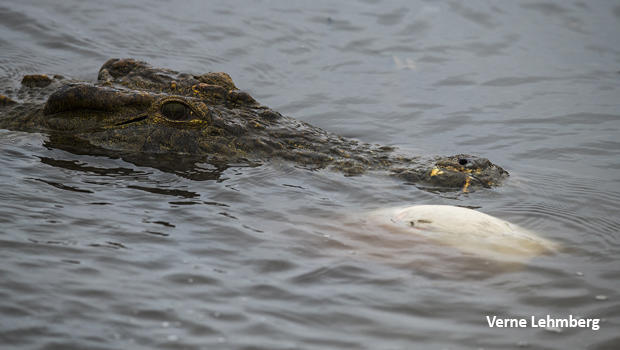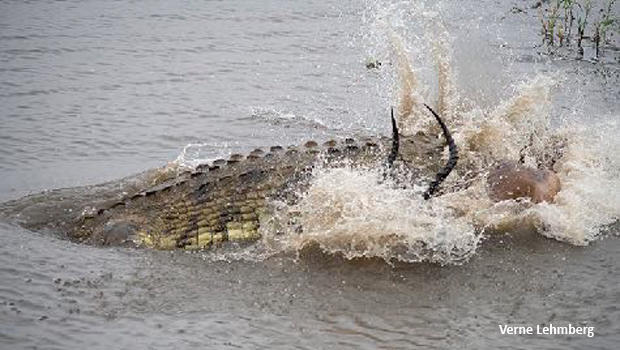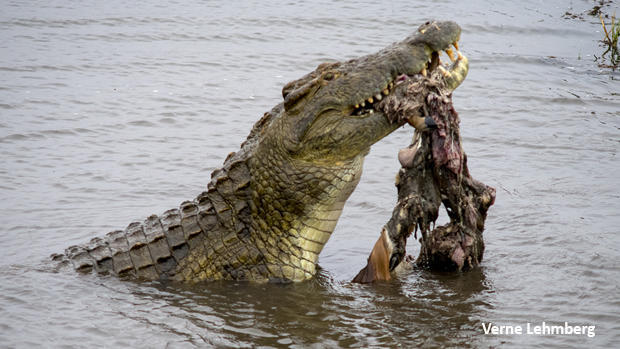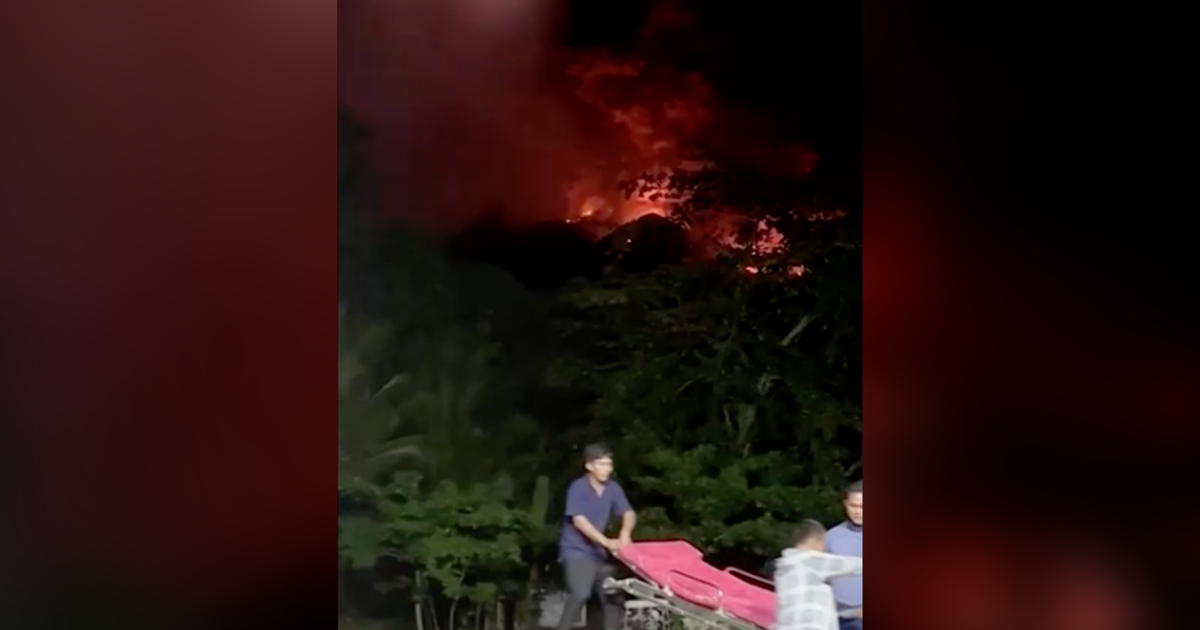Nature up close: One huge crocodile
Follow along as "Sunday Morning" contributing videographer Judy Lehmberg reports on her two-month trip to Kruger National Park in South Africa and to Kenya's Maasai Mara.
A few days ago we saw an absolutely humongous crocodile having lunch. We were driving across the Sabie River bridge and noticed a number of people stopped and watching something upstream. We were able to park just above where a crocodile was eating, so we got a front-row seat to an amazing event.
At first we couldn't figure out what the crocodile had. Then we realized the white blob was an impala's belly.
A 17-foot-long crocodile had just caught and killed an adult male impala and quickly began tearing him apart so he could swallow the pieces. It was obvious this wasn't the croc's first impala. He knew exactly what to do. The power it exerted was truly breathtaking, especially since it was only about 15 feet from us. Being that close to so much deadly power, even from the safety of a car, was something I will never, ever forget. Just the sounds of the crocodile rolling and slamming the impala against the water were impressive.
Crocodiles have many sharp teeth, but they can't chew, so they must tear off chunks of an animal to swallow them. It is impossible for them to bite a chunk off of an animal floating in water so they've had to figure a way around that. They either perform what is sometimes called a death roll (clamping their powerful jaws to various parts of the animal and spinning with such force it literally rips ligaments and tendons, tearing the prey apart), or they slam the animal against the water (which is especially effective at loosening the internal organs).
It took the crocodile at least fifteen minutes to tear its prey apart and swallow the individual pieces whole. It spun and slashed around in the water quit a bit, but when it was just swallowing individual parts we noticed some very dead impala parts moving slightly. That was odd. An extremely dead impala had moving parts? Since it was mostly the intestines moving we were temporarily confused. Then I saw it: A fish head broke the water as it took an enthusiastic bite. The very fish that could be the crocodile's next meal were stealing a meal from their potential predator. Pretty nervy! The legs were the last parts to go down.
The last thing to go down is the head, horns and all.
See also:
- A surprise leopard or two
- The overlooked species
- Decisions, decisions ... lions or elephants?
- Back to Africa
- Kruger National Park feeding frenzy
- Buffalo 1, Lions 0
Judy Lehmberg is a former college biology teacher who now shoots nature videos.
For more info:
- Judy Lehmberg (Official site)
- Judy Lehmberg's YouTube Channel
To watch extended "Sunday Morning" Nature videos click here!







